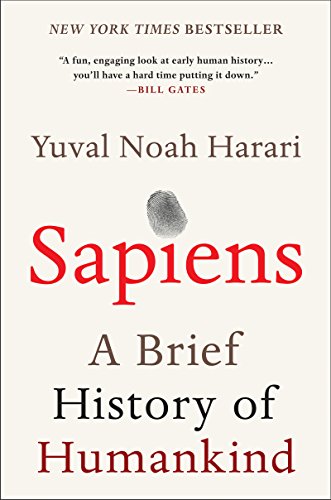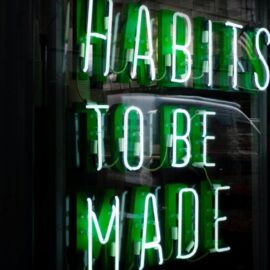

This article is an excerpt from the Shortform summary of "Sapiens: A Brief History of Humankind" by Yuval Noah Harari. Shortform has the world's best summaries of books you should be reading.
Like this article? Sign up for a free trial here .
What are the basic theories of happiness? Which one is correct?
Theories of happiness come from the areas of psychology, biology, philosophy, and religion. Each one has a slightly different take on how to find true happiness.
We’ll cover the four theories of happiness and discuss how they compare.
Theories of Happiness
The Agricultural, Cognitive, and Industrial Revolutions have merged nations, creating a global empire. Further, these revolutions have grown our economy, giving us “superhuman” powers. Have these revolutions increased our happiness, as well? If they haven’t, what was the point? Can we call ourselves successful if we’re not happier today than we were yesterday?
Many researchers have used “subjective well-being” as a stand-in for happiness. This implies that happiness is a feeling, either one of pleasure in the moment or one of contentment in the long term. This theory depends on the assumption that we can judge people’s happiness by asking them how they feel. Although we can’t ask our ancestors how they felt, we can take current findings and apply them retroactively. To determine the progress of happiness, we’ll look at four theories of happiness: the “expectations” theory of happiness, the biological theory of happiness, the “finding meaning” theory of happiness, and the “present moment” theory of happiness.
1. The “Expectations” Theory of Happiness
The most significant finding in the study of happiness is that long-term happiness is based on the gap between our expectations and reality. If the gap is large and reality is far from meeting your high expectations, you’re unhappy. If the gap is small or nonexistent, you’re happy. For example, if you expect to get an ox cart from your father when you come of age and you get an ox cart, you’re happy. But if you expect to get a new Ferrari on your 16th birthday and you get a used Toyota, you’re unhappy.
According to this theory of happiness, solving this problem isn’t as easy as just lowering our expectations. When our lives get better, we expect more. So the more we get, the more we want.
We can find evidence of the wealth or health of our ancestors, but it’s hard to measure the expectations people had in the past. This complicates the task of answering the question, “are we happier now than we were then?” For example, we have less pain than our ancestors did because we have more painkillers and tranquilizers. But because we expect less pain, we may suffer more than our ancestors did when we experience pain. But we can’t know for sure. We can’t put ourselves in the shoes of our ancestors because we inevitably take our modern expectations with us.
For example, we change our clothes every day, so we assume it must have been awful to live as a medieval peasant, who didn’t change her clothes often and went months without washing. But medieval peasants were used to living in unwashed bodies and clothes and didn’t seem to have minded. Daily washing and clothes-changing are modern expectations.
We may be unhappier than our ancestors merely because expectations are so much higher, according to this theory of happiness. This is due, in part, to the media and advertisements. They manipulate our expectations and erode our contentment. A teenager living 5,000 years ago judged his appearance against his fellow villagers, most of whom were old and wrinkled or still children. Most teenage boys of the past probably felt pretty good about how they looked. In contrast, today, a teenager is bombarded by images of movie and sports stars on TV, the internet, and billboards. He’s much less likely to feel confident in his appearance because the expectations are higher. We don’t compare ourselves against our ancestors. We compare ourselves against our contemporaries.
The Future of Happiness
As expectations continue to increase, it’s possible our happiness will continue to deteriorate. For example, we talk about immortality as the biggest breakthrough for happiness. What could be happier than not dying? But the expectation of immortality, contrasted with reality, will bring new problems. The poor probably won’t be able to afford the technologies that make people immortal. This will make them feel angrier and more oppressed than previously. The gap between their expectations (immortality) and reality (mortality) will widen dramatically.
The rich, who can afford the technology to be immortal, will feel anxious. Although they may not die of natural causes, they could still be hit by a car or their city could be bombed by a terrorist. The gap between their expectations (immortality) and reality (the world will always contain life-threatening dangers) could make them risk-averse and paranoid. Further, when death is no longer natural, losing a child or spouse will be even more heartbreaking than it is now.
2. The Biological Theory of Happiness
According to this theory of happiness, our happiness is determined by the biochemical reactions caused by hormones like oxytocin, serotonin, and dopamine. This implies that happiness comes from pleasurable feelings—whether we win the lottery or fall in love, happiness comes not from the experiences themselves but from the resulting flood of hormones and electrical signals in our brains.
Unfortunately, we have evolved to remain in a relatively static state of happiness. It wouldn’t be prudent for the success of our species to be happy all the time. For example, sex evolved to be pleasurable so that men would be motivated to spread their genes. But this pleasure also evolved to be limited. If orgasms lasted forever, males wouldn’t bother doing anything else, like hunt for food, eat, or look for other available females.
Like an air conditioner, our biomechanical system is programmed to return to a set point, and every individual has a slightly different set point. Some air conditioners are set to 70 degrees Fahrenheit and some are set to 20. Similarly, this theory of happiness says that some people’s happiness levels are set to fluctuate between levels 6 and 10 and level out at 8, whereas other people’s levels fluctuate between 3 and 7 and level out at 5. This means that some people are wired to be happier and some wired to be gloomier, regardless of external circumstances like money or health.
For example, the French Revolution brought about many changes: it did away with the monarchy, gave peasants land, and gave citizens rights. But it didn’t change the biochemical systems of French individuals. Consequently, the revolution may not have had much of an impact on French happiness. Those who were happy before the revolution were happy after it. Those who had griped about Louis XVI and Marie Antoinette before the revolution probably griped about Robespierre and Napoleon after it. Their genetic predispositions, and therefore outlooks on life, remained the same.
The biological theory of happiness suggests that historical developments have had no effect on happiness since biologically, we’re pretty much the same as we were 5,000 years ago. The only historical event that could have possibly impacted our happiness was the development of antidepressants that change our biochemistry, like Prozac. But we don’t like this idea. We’re troubled by happiness that comes from a pill, although we’re not sure why.
3. The “Finding Meaning” Theory of Happiness
Some studies suggest that our biochemistry and pleasurable feelings aren’t everything when it comes to happiness. For instance, studies show that when you break down the actions involved in raising a child, you don’t get pleasurable sensations. Instead, you get dishwashing, diaper changing, temper tantrums, and various expenses. There are far more unpleasant moments than pleasant ones when raising a child. On the face of it, childrearing doesn’t seem like something that’s going to bring much happiness. Yet it does. Parents say that having children brings them more happiness than anything else in life. Are they lying? Deluding themselves?
The “finding meaning” theory of happiness says that you’re happy if you view your life as having a purpose. Even hardships can contribute to happiness if you find meaning in them. Children often serve to give meaning and purpose to the lives of their parents. This makes parents happy to have children.
What does this mean for the history of happiness? Our ancestors were far more religious than we are today. Secularism and secular religions are on the rise. Our ancestors were more likely to believe in bliss in the afterlife, and this belief gave their lives meaning. If you’re promised rewards for your struggles, you’re far more content and tolerant of hardship today.
But if you don’t believe in the afterlife and don’t feel like there’s an overarching purpose to life, how do you remain content in a world of so much hardship? Our imagined realities give life meaning. Capitalism and the secular humanistic “religions” allow people to view their lives as having a purpose, even if they don’t believe they’ll be rewarded in heaven.
Science, on the other hand, doesn’t offer this comfort. From the scientific point of view, life has no meaning. Evolution doesn’t have a purpose. Natural selection works “blindly.” This means that any meaning you ascribe to your life, whether it comes from a capitalist, humanist, or religious point of view, is a delusion. Therefore, your happiness depends on your ability to align your particular delusion with the delusions of society. As long as everyone tells the same myths about meaning, you can convince yourself of the reality of that myth. You can believe your life is meaningful and through this belief find happiness. The “finding meaning” theory of happiness is one many people ascribe to.
4. The “Present Moment” Theory of Happiness
All the options so far are dependent on our feelings. As a society, we privilege our feelings, urging individuals to be true to themselves and follow their hearts. We judge what is good and moral based on our feelings.
Although this is our prevailing worldview now, it’s an oddity in history. For most of history, religions have given objective standards for what makes something good and moral. This makes sense. Surely not everything that feels good is good. If we ask heroin addicts when they’re happiest, they’re going to tell us it’s when they shoot up. Does that make heroin the key to happiness?
Buddhism is a famous example of a religion that doesn’t give precedence to pleasurable feelings in determining happiness. According to the Buddhist view, when we identify who we are with what we feel, we cause ourselves to suffer.
Feelings are not all-important. They’re just sensations. We shouldn’t be attached to good feelings or averse to bad feelings. Craving pleasure leads to suffering—we’re either discontent because we don’t have the pleasure we want, or we’re anxious about losing the pleasure we have. The root of suffering is chasing and grasping at pleasure while we run from and try to rid ourselves of pain. This is the part of the “present moment” theory of happiness.
Happiness isn’t an emotional state and comes not from pleasurable feelings but from accepting the sensations as they are, without attributing value to them. In this way, we live in the present moment, not anticipating pleasure in the future. We focus on knowing ourselves and knowing that we are not our sensations and emotions.
From the point of view of this theory of happiness, we can’t really make assumptions about the history of happiness. We can’t tell if the ancients knew themselves any better (or worse) than we do today.
—-
It’s not important to know which theory of happiness is correct. What’s important is that we know the different approaches and understand that we can’t leave the question of happiness out of the equation when we’re assessing historical progress.
———End of Preview———

Like what you just read? Read the rest of the world's best summary of "Sapiens" at Shortform . Learn the book's critical concepts in 20 minutes or less .
Here's what you'll find in our full Sapiens summary :
- How Sapiens outlived and outlasted the 8+ other human-like species on Earth
- The 3 critical revolutions in human existence that led to our domination of the planet
- How much of what powers our world today is really just a shared mass delusion
- What the future of humanity might look like







Very helpful artical for me . Thnak you very much for giving us such valiuble artical.